7 common bathroom lighting mistakes, and how you can avoid them
Discover how to dodge common bathroom lighting blunders and what to do instead

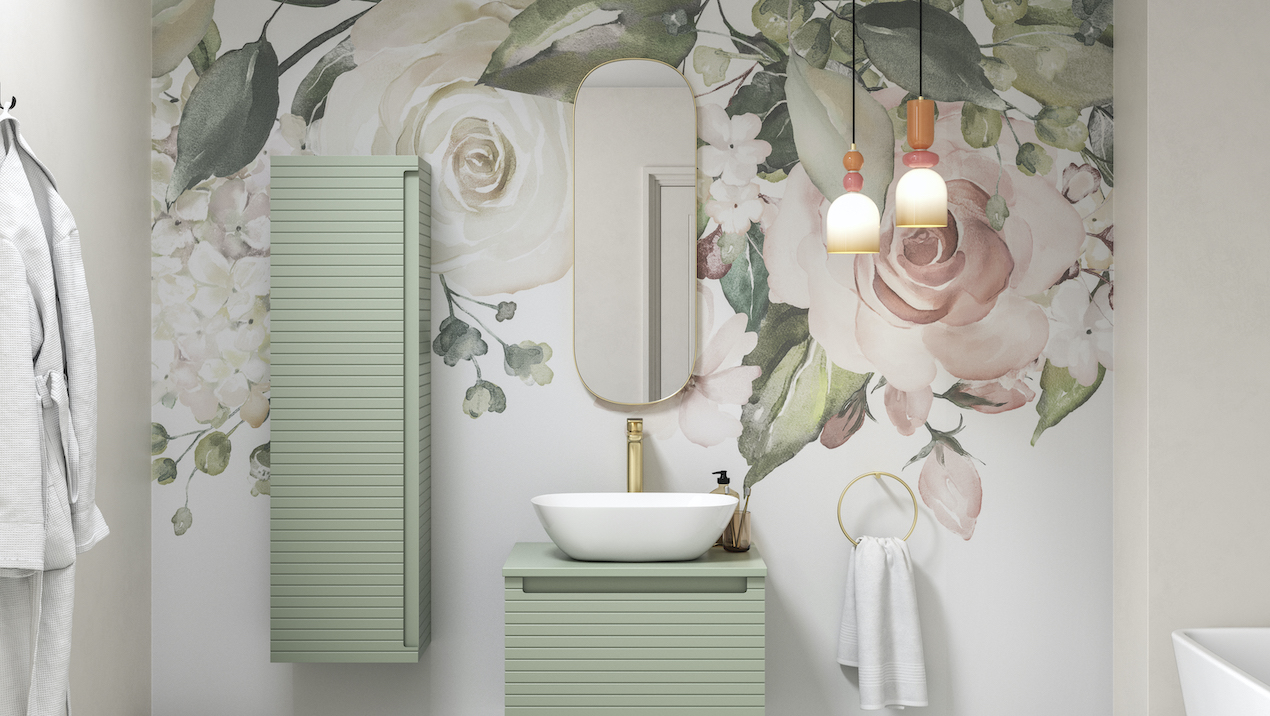
Getting the lighting wrong can really kill any relaxing bathroom design ideas you may have in mind, and potentially lead to wonky eyebrows and/or a patchy beard! It can also result in décor disappointment and a room that’s just not a pleasant place in which to start and end each day.
The most beautifully lit bathrooms, by contrast, feature strategically positioned fittings that can be adjusted to suit the use and desired mood from day to night. Plan bathroom lighting ideas at the same time as the bathroom layout to ensure the main fittings, i.e. your basin, bath and shower, are directly illuminated. A night-light, activated by motion sensor, is a good safety feature for nocturnal trips to the bathroom, while low level lighting can help create a soothing sanctuary that’s as pampering as your favourite spa.
Since water and electricity don’t play nicely, omitting safety could prove deadly. ‘Light fittings are given an IP rating, which relates to its water resistance. An IP44 rating or above, depending on placement, is deemed safe for use in the bathroom. Check the label on the box to make an informed decision before you buy fittings,’ advises Piero De Marchis, director, Detail Lighting.
Bathroom lighting mistakes
The number one lighting crime in the bathroom has got to be relying solely on a single, sad light source in the middle of the ceiling. ‘You need at least two types of illumination in the bathroom: shadow-free task lighting for functional tasks such as shaving and applying make-up and ambient lighting for when you simply want to lie back and enjoy a soak,’ says Charlie Bowles, director of Original BTC.
1. Too many downlights
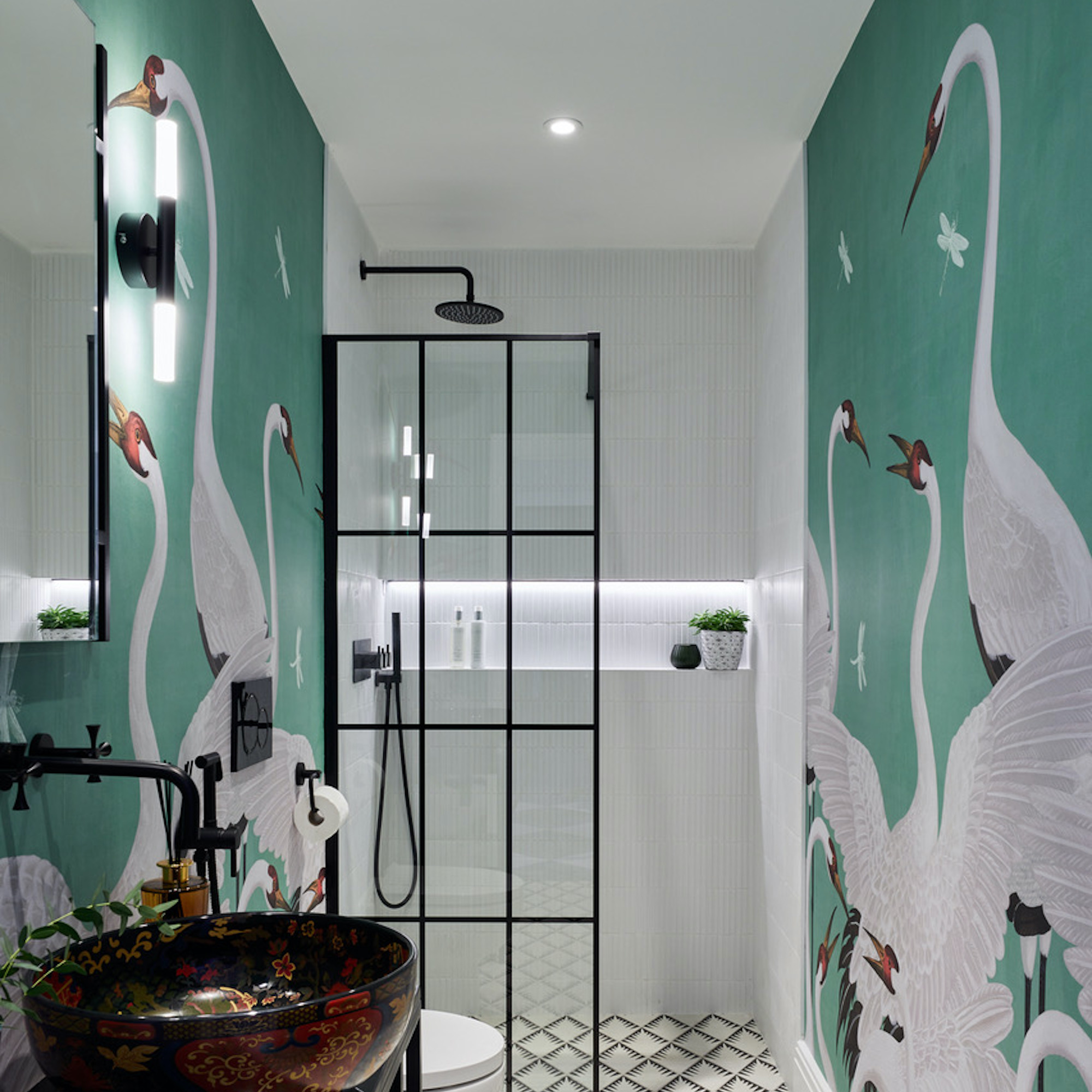
We’ve all got the memo that a lone ceiling light won’t cut it in when plotting how to plan a bathroom, but, according to lighting experts, peppering the ceiling with spotlights can be an even bigger faux pas. Over-lighting is not only painful to your retinas but can also cause damage to your energy bill.
To achieve the right balance of lighting in the bathroom, it’s less about the number of fittings, and all about the positioning, says Peter Legg, New Product Development Manager, Där Lighting. ‘For example, wall lights will help the space feel brighter and larger, while task lights should be positioned where they’re needed, over the vanity and shower, rather than symmetrically on the ceiling,’ she says. ‘Layering lighting to provide task, ambient and accent points is crucial when creating a calming and practical bathroom.’
2. Not considering warmth

Ever been into public restrooms or the hair salon and shuddered at your corpse-like complexion in the mirror? Chances are they’re fitted with cold white lights that are better suited to a mortuary.
Sign up to our newsletter for style inspiration, real homes, project and garden advice and shopping know-how
‘Light temperature affects how flattering light is. It is measured in Kelvins (K), which range between 1,000 to 10,000K,’ explains Matthew Currington, technical director, The Lighting Superstore. The Kelvin rating will be listed on the packaging or sales description of lightbulbs.
‘The most unflattering is a fluorescent light, between 4500-6500K. If you’re after a calming and flattering light, find a soft and warm incandescent or LED light source measuring around 2700K,’ says Matthew, who recommends using brighter light, between 3,300-5,300K for task areas like the vanity mirror, and warmer light closer to 2700K elsewhere. ‘For flexibility, consider a smart light like the Dorado recessed LED bathroom downlight from The Lighting Superstore, which is able to emit light temperatures ranging between 2200K and 6000K giving you the option to change from cold to warm according to use.’
3. Forgetting safety
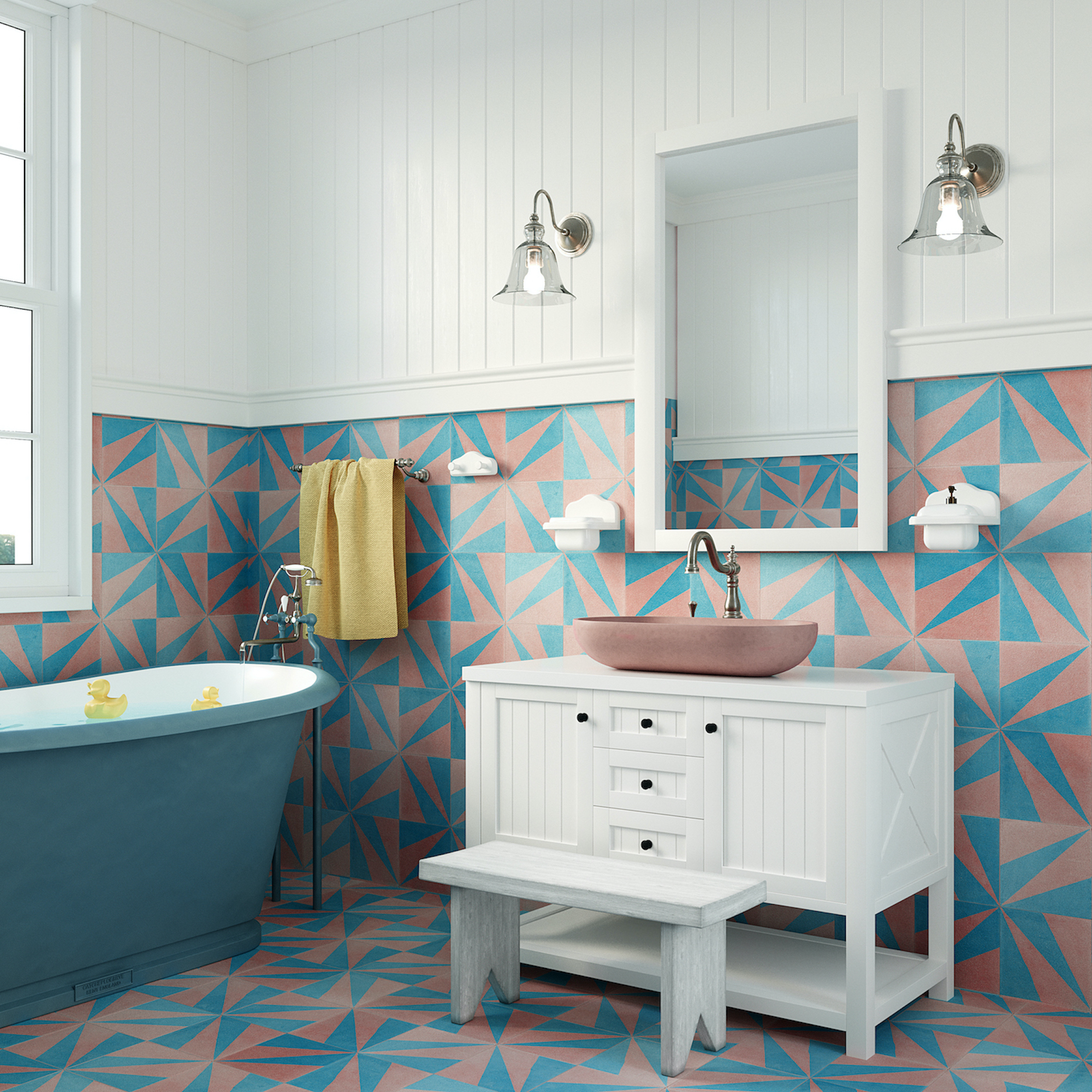
As tempting as that bargain designer chandelier in the January sales might be, never buy light fittings for bathroom use based on looks alone. ‘Neglecting IP (Ingress Protection) ratings when selecting bathroom lighting can lead to both safety hazards and potential building code violations, often resulting in costly reworks,’ says Julian Page, Head of Design at BHS.
‘To prevent electrical accidents and meet regulatory requirements, always choose fixtures with appropriate IP ratings for wet or damp areas,’ adds Julian. ‘Lights rated IP65 and above are recommended for placement above showers and closer to water sources, whereas IP44-rated products and above are recommended for the rest of your bathroom overall.’ Take special care with lights that will come into direct contact with water – these will need to be rated IP67 or IP68, which is immersion proof.
Luckily the design options for bathroom lighting are much better nowadays, and sellers now have extensive collections dedicated to the bathroom, which makes it easier to source fittings for everything including shower lighting, that have the correct IP ratings.
4. Lights that cast shadows
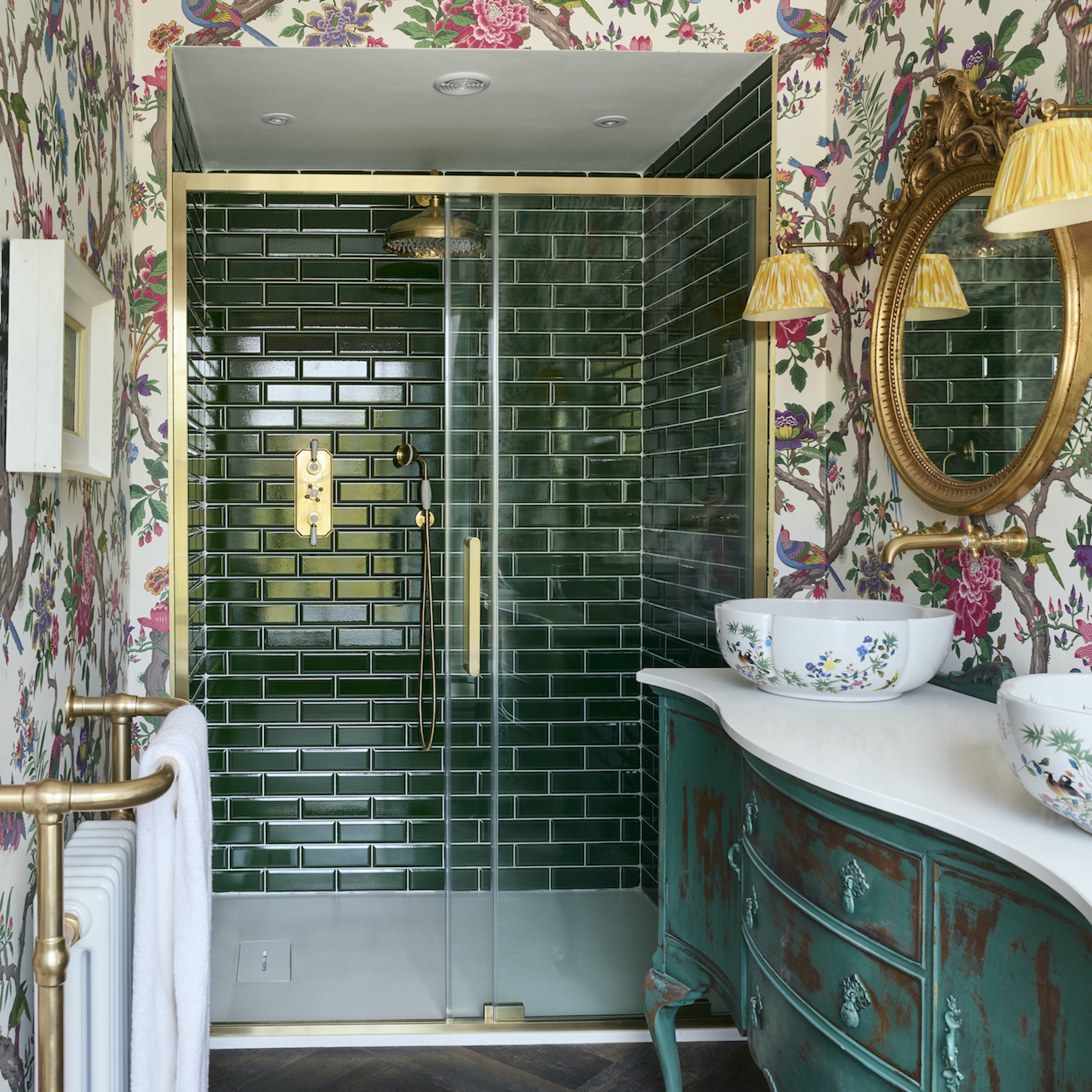
A well-lit vanity space is essential for any close-up work in the bathroom, be it toothbrushing, shaving, applying make-up or squeezing spots! Just kidding; never squeeze spots.
When looking for bathroom over mirror lighting options, the worst mistake you can make in this area is to try and rely on lights that are positioned behind your head as you lean into the mirror, a ceiling pendant or downlight for example. ‘Instead, position task lights either directly above the mirror or on each side to ensure your reflection is well lit and you can do your daily facial routine with ease,’ says Mary Buchanan, Creative Director of Laura Ashley Lighting and Mirrors.
A bathroom mirror with lighting integrated all the way around is the best way to avoid shadows on the face entirely, but it’s not terribly forgiving and may not be what you want to see first thing in the morning!
5. Installing all the lights on one circuit
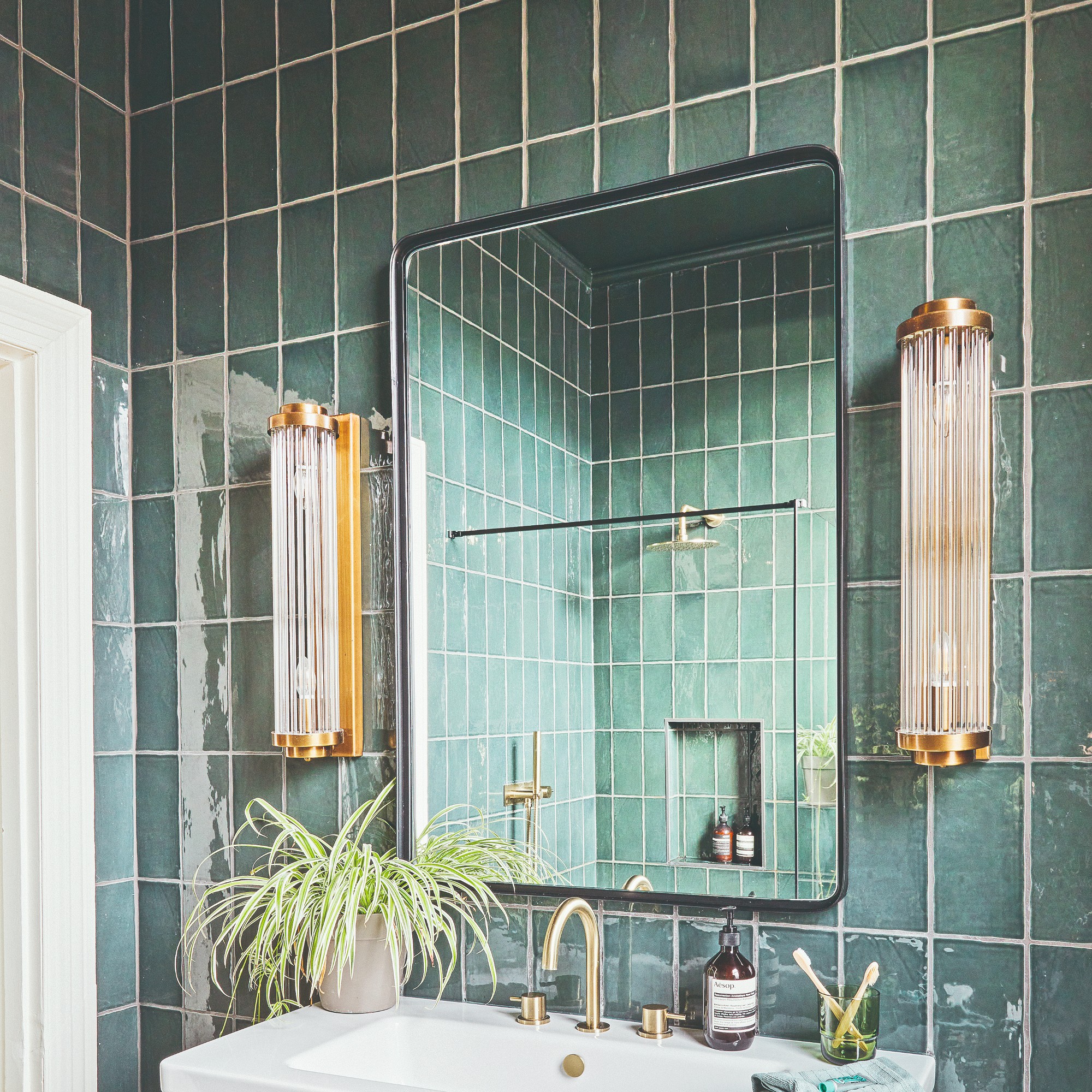
Investing in more than one light fitting for the bathroom is a very good start, but it’s not ideal if one switch operates every light in the room at once. Lighting experts recommend a minimum of two lighting circuits in the bathroom; one switch for the vanity lights, and another for the ceiling, pendant or bathroom chandelier. Adding in a third light switch to control ambient mood lighting means you can soak in the bath or head to the loo at midnight without waking the neighbours.
‘We always recommend separate circuits for task, ambient, and accent lighting in spaces like bathrooms,’ agrees David Amos, CEO of Amos Lighting + Home. ‘Consider incorporating dual switches or dimmers just outside your bathroom as a way to control the multi-circuits as they allow you to easily adjust the lighting according to your needs and mood without extra costs or hassle.’
6. Low slung central pendants

‘Hanging pendants too low is a common mistake in bathrooms,’ Mary Buchanan, Creative Director of Laura Ashley Lighting and Mirrors. ‘We generally recommend close to ceiling such as flush or semi-flush; these stay out of the way, are easy to clean and give a great light from above.’
Checking the height of bathroom pendants versus their IP rating is particularly important directly above the bath and shower, where light fittings of less than IP44 must stay above 2.25m from the floor. If you want to go lower, source a fitting rated at IP65.
The exception to the low-slung rule is around the mirror, where longer pendants can bring the light source closer to eye level and provide a clearer, shadow-free reflection. Bear in mind that if the pendant falls within a 60cm radius of the basin taps, it will need to be IP44 rated.
7. Not understanding ambient vs accent lighting

While the term ‘task lighting’ is self-explanatory, the words ‘ambient’ and ‘accent’ are easily confused when discussing bathroom lighting, and they are very different.
Jo Plismy, designer and founder of Gong, has the low-down. ‘Ambient lighting refers to your overall illumination, which is essential for ensuring a well-lit environment and improving visibility for daily tasks, whereas accent lighting illuminates a particular feature or surface and is all about adding depth and definition,’ she says.
Admittedly accent lighting is less vital in a shower room that you only dash in and out of in the mornings than it is in a sanctuary-style master bathroom designed for soaking and pampering. However, accent lighting has the power to make any room, even lighting for a small bathroom, appear more luxurious and up-market, which is why experts believe it shouldn’t be overlooked.
‘Ambient lighting is typically achieved by placing fixtures on or near the ceiling, ensuring there are no harsh shadows or dark corners in the bathroom. Accent lighting is often placed in storage niches, under shelving or to up-light a bath or planter and contributes to a relaxed atmosphere,’ adds Jo.
FAQs
How can I make my bathroom light more flattering?
When it comes to flattering light in the bathroom, paying attention to the Kelvins figure of your bulbs will get you everywhere. ‘The bathroom is the room where we start to get ready in the morning and end our day before bed, so it’s important to choose a bulb which is neither too harsh, nor too dim. If you’re looking for a bulb which shows your accurate skin tone best, I would recommend choosing a 4000 Kelvin bulb,’ explains Piero De Marchis, Director, Detail Lighting. ‘If you’re applying make-up, then you’ll want something slightly brighter at about 5000K. If you’d prefer a softer lighting for relaxing purposes, then I would recommend a 2700K-3000K bulb.’
How do you know if a light is safe for a bathroom?
‘Personal taste and stylistic flourishes aside, the main thing to consider in a bathroom is safety. The placement of all bathroom lighting falls into zones and there are specific guidelines as to the IP rating required in each zone,’ says Jo Plant, Head of Design at Pooky.
Zone 0 covers areas where full water submersion is likely, such as inside the bathtub and shower tray, Zone 1 refers to areas that need to be fully splash-proof, like in the shower cubicle and above the bath, and Zone 2 is just outside these areas, so could be lightly splashed.
It is possible (and legal) to use fittings without IP ratings outside of these zones, i.e. near or on the ceiling and well away from water. However, it’s still considered good practice to choose IP44 fittings to stay on the safe side, and also because fittings designed for bathroom use are more likely to be made from materials and finishes that won’t easily corrode in humid conditions.

Linda Clayton is a professionally trained journalist, and has specialised in product design, interiors and fitness for more than two decades. Linda has written for a wide range of publications, from the Daily Telegraph and Guardian to Homes & Gardens and Livingetc. She has been freelancing for Ideal Home Magazine since 2008, covering design trends, home makeovers, product reviews and much more.